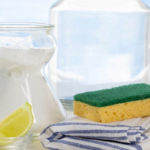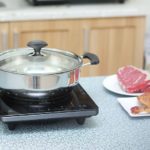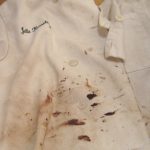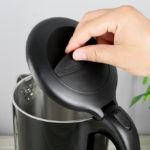Step 1: Wait for the caramel to cool and harden in the pan
If your caramel layer is only thin, you can simply scrape it off with a knife or spoon without needing to do any additional steps.
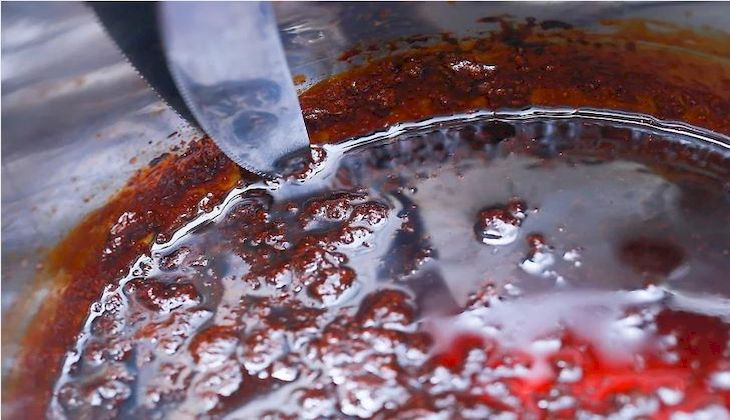
However, if your caramel layer is thick and stuck to the bottom of the pan, then you need to soak it before scraping. After softening the caramel layer, your next step is to scrape off the caramel layer with a spoon or knife.
Step 2: Clean the pan to remove caramel
Scrub the pan with dishwashing liquid.
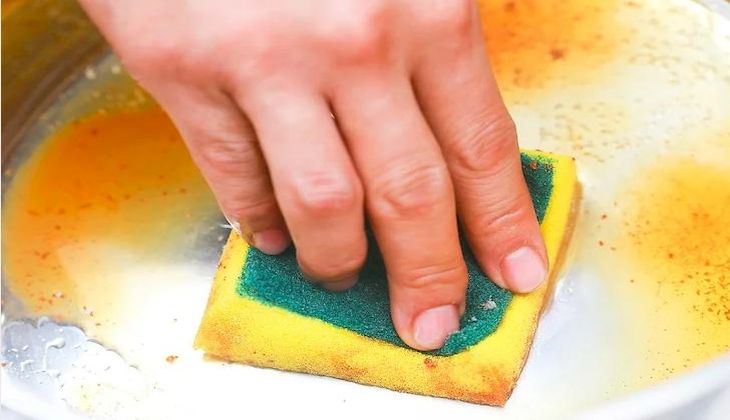
Step 3: Check the pan and put it in the freezer
Touch the bottom of the pan, if the stubborn caramel is still sticking to the bottom of the pan, put your pan in the refrigerator for 2 hours. This will help freeze and harden the caramel layer completely, making it crispy and easier for you to scrape it off.
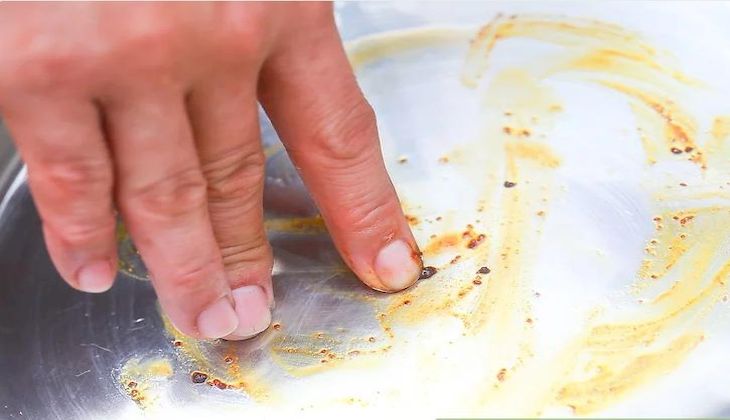
Step 4: Take the pan out and scrape off the excess caramel.
After letting it freeze for 2 hours, take the pan out and scrape off the stubborn caramel layer. Then clean them with clean water and dry them with paper or a cloth.

2. Use Soda water
Step 1: Pour soda water into the pan or pot while still hot
When your pan or pot is still hot, pour soda water into it. This will help the components in the soda water react with the iron, making the surface of the pan smoother and less likely to stick.

Step 2: Soak and scrub with a sponge or cloth.
Soak in soda water for about 15 minutes, then use a sponge or cloth to scrub and clean the floating bottom.

Step 3: Pour out the soda water and clean again with water
After scrubbing, pour out the soda water and clean again with water. Use a sponge to clean the pan’s bottom to ensure no remaining caramel residues. Finally, dry the pan with a cloth or paper towel.
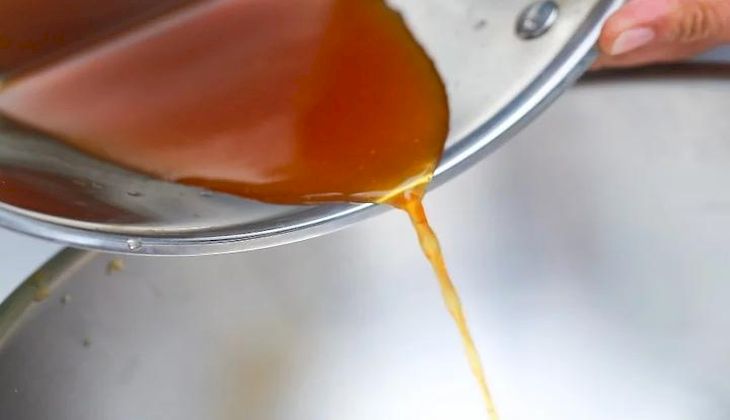
3. Use hot water
Step 1: Pour hot water into the pot
First, pour hot water into your pot or pan, making sure the hot water completely covers the caramel layer inside the pot.
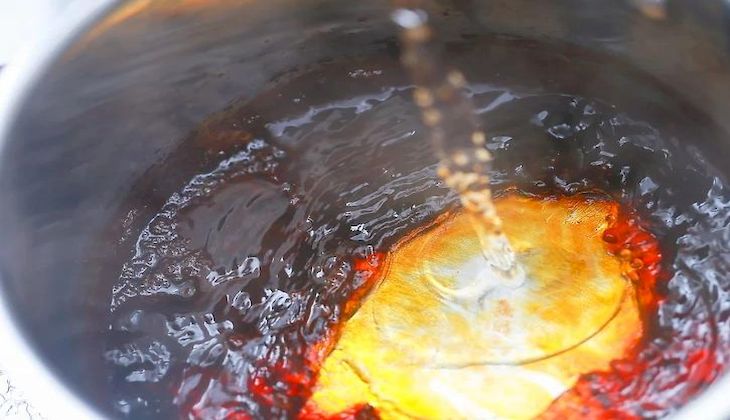
Step 2: Soak the pot
Next, cover the pot and soak it for one hour.
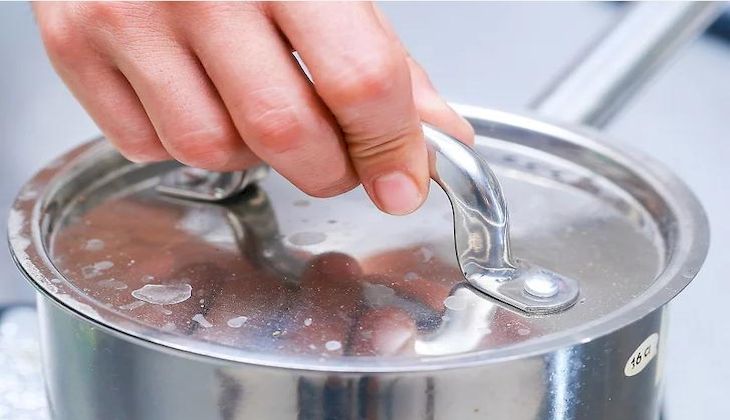
Step 3: Pour out the water and check the pot
After soaking the pot, pour out the hot water and check if there is still stubborn caramel sticking to the bottom of the pot. If there is, try using hotter water to remove any remaining caramel.

Step 4: Pour enough water into the pot and boil it
Pour enough water into the pot to completely cover the remaining caramel.
Next, place the pot on the stove and boil the water inside the pot for at least 10 minutes. This will help the stubborn caramel stuck to the bottom of the pot melt away. From there, cleaning the pot will become easier.
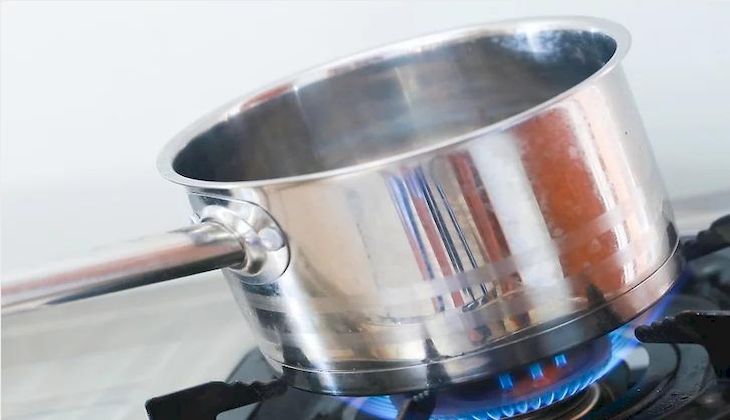
Step 6: Turn off the stove and scrub the pot
Use a sponge and a little dishwashing liquid to scrub and thoroughly clean the caramel layer in the pot. Finally, rinse them again with clean water and dry them with a cloth or paper towel.
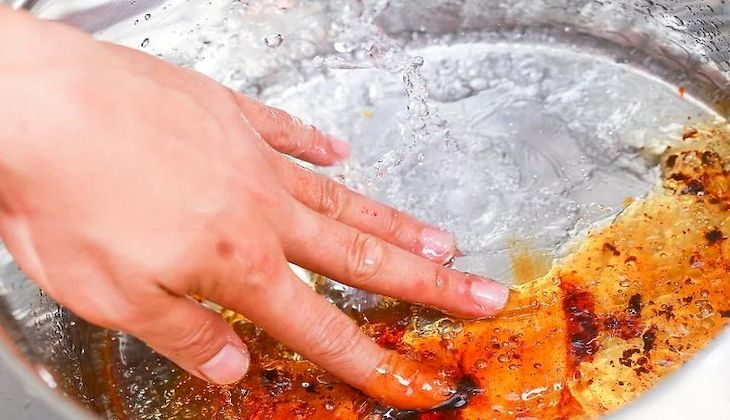
4. Use saltwater
Step 1: Soak the pan or pot with saltwater
Make a saltwater solution in a ratio of 1 tablespoon of salt: 1 cup of water (250ml). Then pour this solution into the pan or pot. Note that you must make sure that the caramel layer must be fully submerged in the saltwater solution.

Then, soak the pan or pot with the saltwater solution overnight.
Step 2: Boil the saltwater inside the pot
After soaking overnight, boil the saltwater in the pot or pan until it boils. When the saltwater solution boils, the caramel inside the pot will become soft and melt, making it easier for you to scrub it off.

Step 3: Scrub and dry
After boiling, turn off the heat and pour out the saltwater from inside the pot or pan. At this point, the amount of caramel inside the pot or pan has been removed quite a bit, the next thing you need to do is clean them again with a sponge. Then dry them with a cloth or paper towel.

5. Use dishwashing liquid or fabric softener
Step 1: Pour warm water into the pot
Pour warm water into your pot or pan, making sure that the warm water completely covers the caramel layer inside the pot.

Step 2: Add dishwashing liquid or liquid fabric softener to the pot and soak
Both of these solutions serve to soften the caramel layer, making it easier to scrub them off. If your pan or pot has a very stubborn caramel layer, the fabric softener solution may be a better choice for you.
Soak the solutions for about one hour.
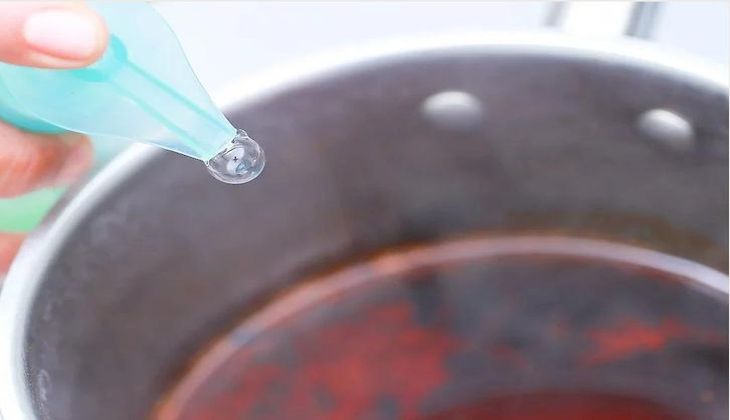
Step 3: Scrub the pan with a sponge
Scrub the caramel layer in the pan with a sponge, rest assured that the scrubbing will not be too difficult because after soaking, the caramel layer has become softer and easier to scrub.

Step 4: Clean again with clean water
After scrubbing, clean the pan with clean water and dry it with a cloth or paper towel.

With these methods, cleaning your pan or pot becomes easier. If you have any other methods, please share with us in the comments section below!
Discover the Quickest Way to Clean Your Fridge for Tet in Under 20 Minutes
As we approach Tet, preparations for the New Year can seem endless. From cleaning the house to sorting through cabinets, it can be a taxing process. But perhaps the most dreaded New Year chore is refrigerators. No need to fret, though – with these helpful tips, you’ll have a clean fridge in no time – just 20 minutes!

























